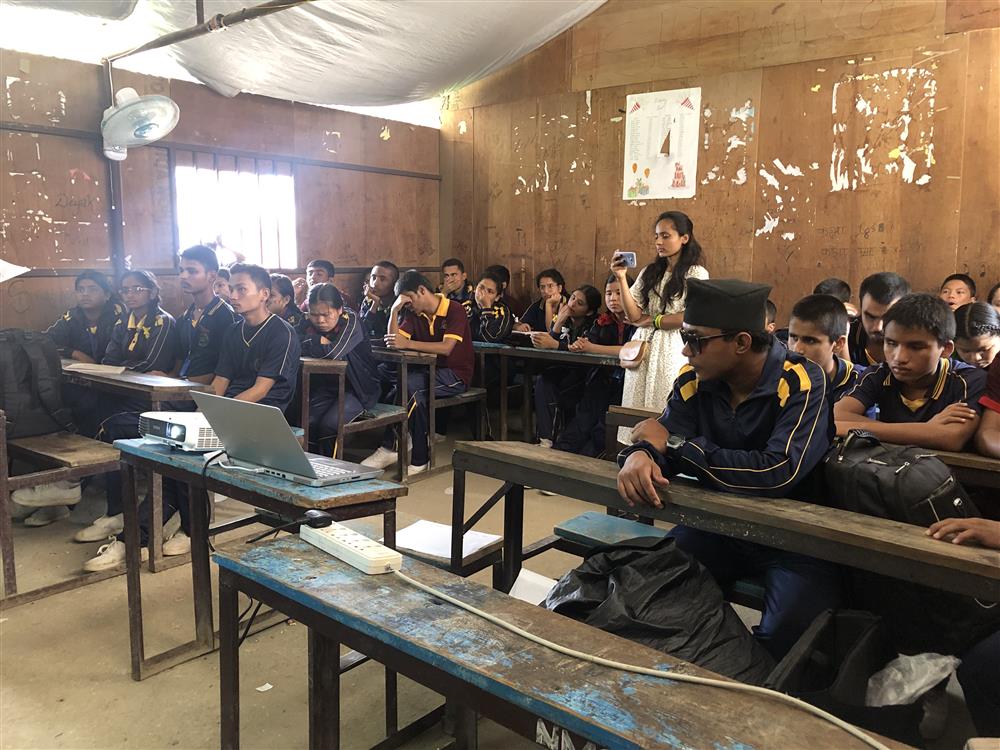A countrywide policy framework for lifelong inclusive learning
- Solution
- Inclusive Education Policy (2016)
- Organization
- Nepalese Ministry of Education, Science, and Technology
- Country of Implementation
- Nepal
- Region
- Asia & Pacific
- Subregion
- South Asia
- Start Year
- 2017
- First published
- 31.01.2020

Solution details
People
“The adoption of the Inclusive Education policy is granted by the constitutional rights of children with disabilities.” A Nepal Government official
The Inclusive Education Policy of 2016 targets the right to lifelong education in one’s own community in a non-discriminative environment by respecting cultural, class, caste, and geographical diversities from preschool to higher education. The policy consists of 43 working policies, 17 strategies, and 13 guiding principles, and is implemented by programme committees at the local and provincial level, as well as by NGOs under the supervision of MEST. The policy foresees specific teacher training; accessible ICT as an integral part of Inclusive Education; and the early assessment of physical, mental, sensory, and intellectual functions of children. In 2017, 64,660 children with disabilities were enrolled in schools in Nepal.
Problems Targeted
In Nepal tens of thousands of children with disabilities –particularly children with intellectual disabilities, autism, or Down Syndrome, or who are deaf or blind – remain out of school.
Solution, Innovation and Impact
After Nepal ratified the UNCRPD in 2010, local disabled persons’ organizations started to work on an Inclusive Education policy and formed a draft taskforce. The draft policy was opened for feedback from concerned stakeholders, and a website was provided whereby disability leaders could give comments. These recommendations were then taken into consideration in the formulation of an Inclusive Education Policy. This policy has been adopted by the Federal Government and is mandatory across the country, but it does not have the status of law. There is flexibility in terms of the adoption of specific curriculum and school implementation at the province level based on local circumstances. In order to increase school participation there are continuous assessments of children with disabilities, the promotion and distribution of accessible ICT, and the implementation of accessibility measures in all school infrastructures. Other accessibility priorities concern curricula and textbooks. In 2019, there are 380 resource classes, 32 special schools, and 22 integrated schools for the education of the deaf, children with visual impairments, and children with intellectual disabilities.
Funding, Outlook and Transferability
The 2019 programme budget is $10 million. The MEST has allocated grants for the operation of each of the 380 resource classes as a preparatory class for mainstreaming children with disabilities across the country. The Ministry estimates that further funding is needed to provide accessible teaching and learning materials as well as reading devices. In the immediate future, investments are targeted at ensuring that the infrastructure and environment of all schools are accessible. Another focus is to promote disability-friendly, girl-friendly, and child-friendly attitudes among students, teachers, and communities. Since the policy has already been successfully implemented, there is strong interest from other countries to replicate it.
Media
Pictures
Videos
Downloads
Related information
- Connections
- 2
-
Organization
- People